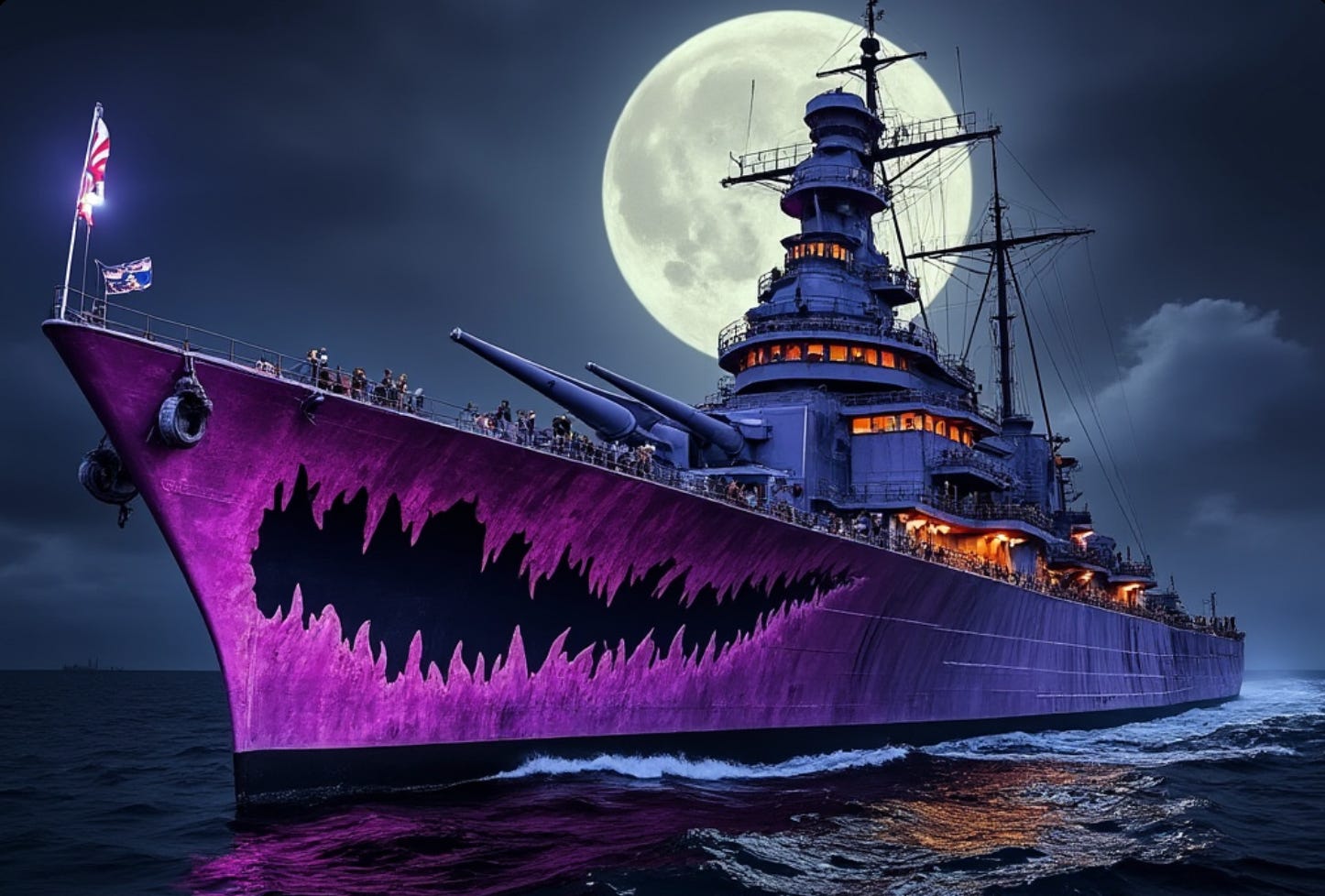You can listen to the show at this link, or on the Spotify widget below.
Showlinks
Summary
In this episode of Midrats, Sal and Mark discuss the evolving geopolitical landscape, focusing on China's strategic maneuvers around Taiwan and the implications for US military preparedness. They explore the potential for conflict, the challenges facing the US Navy, and the need for a reevaluation of military strategy and acquisition processes. The conversation highlights the complexities of international relations and the shifting balance of power in the region. In this conversation, Mark and Sal delve into the complexities of naval strategy, fleet composition, and the lessons learned from historical engagements like Taffy 3. They discuss the limitations of wargaming, the need for modernization in naval warfare, and the challenges of military production in times of peace. The dialogue also touches on the shifting global power dynamics and the implications for military strategy, particularly in relation to Israel and the broader international community.
Takeaways
The ongoing conflict in the Red Sea highlights the complexities of modern warfare.
China's maneuvers around Taiwan reflect a strategic approach to territorial claims.
The use of non-military assets by China complicates international responses.
The US military faces significant challenges in terms of preparedness and resources.
China's strategy may involve a slow strangulation of Taiwan's economy.
International recognition of Taiwan's sovereignty is dwindling.
The US's military pivot to the Pacific has not been adequately supported by resources.
Naval strategy must adapt to the realities of modern warfare in narrow seas.
The acquisition process for military assets is slow and risk-averse.
There is a pressing need for change in military development and strategy. The importance of having a diverse fleet for various combat scenarios.
Historical engagements like Taffy 3 provide valuable lessons for modern naval strategy.
Wargaming often fails to capture the unpredictability of real-world engagements.
Smaller, well-led units can outperform larger forces under the right conditions.
The U.S. Navy needs to modernize its approach to warfare and fleet composition.
Production capabilities must align with wartime needs to ensure readiness.
Understanding global power dynamics is crucial for effective military strategy.
The international community's perception of military actions can impact alliances.
Decisive action is necessary when dealing with irrational adversaries.
Military strategy must evolve to address contemporary threats effectively.
Sound Bites
"Halloween's spooktacular, but all our shows are spooktacular."
"We need to think about smaller, highly armed boats."
"Wargames are limited by assumptions and math."
"Taffy 3 turned around a massive Japanese force."
Chapters
00:00: Introduction and Context Setting
01:55: China's Strategic Maneuvers Around Taiwan
09:55: The Implications of China's Actions
18:13: US Military Preparedness and Response
26:05: Challenges in Naval Strategy and Acquisition
32:07: Future of Military Development and Change Management
33:47: Navigating Naval Strategy and Fleet Composition
39:49: Lessons from History: The Taffy 3 Engagement
45:40: The Need for Modernization in Naval Warfare
52:19: Production Challenges in Military Readiness
56:05: Understanding Global Power Dynamics and Military Strategy





Small Ships - FRCs could keep coming off the line at up to 5 per year. Some work would probably get that to 6 per year. I might suggest switching to a 55m/180' design and also look to expand production to a second yard, possibly a yacht yard. A ship this size would be a little better for getting places in the Pacific.
The future is sitting in Mobile waiting for a year now to be fitted out. OUSV-3 Vanguard. Austal is pretty busy. Gulf Craft LLC built all the ships this design is based on. Metal Shark builds the 40' PBs for the Navy, LRUSV, and several FMS ships just on the other side of the road from Gulf Craft. These guys need to buddy up and pump out some ships. Other FSV build yards like ECO's yards could also be courted.
My other suggestion would be to try and get a bunch of 35m patrol boats via Metal Shark and Swiftships if Swiftships can be trusted to do anything. There are a few other yards we could bring in and really grow ship numbers in these sizes. Have other small yards build articulated ocean going tug/barge combos to function as mobile bases / tenders.
TLAM Loadout- These need moved to our adjunct ships MUSV/LUSV/DDC so the AAW platform does AAW and can remote launch their Tomahawk strikes such the strike platform and the AAW platform are best positioned for each mission. We will then learn how handy a small, fast missile hauler can be when we use it for NGFS with quad packed GMLRS/ER-GMLRS and 9 packed 120mm rockets which are in development.
I do not listen to podcasts. Too much of my time for too little information.
Why not use 21st Century technology to dictate, revise, publish?